Facts About the Summer Triangle
The Summer Triangle is an asterism composed of the stars Altair, Deneb, and Vega. Each of these stars has the “alpha” designation, which means they are the brightest stars in their respective constellations. Before we dive deep into detail, lets take a look at some quick fire facts!
- The sky pattern now known as the Summer Triangle was once called Grosses Dreieck (Great Triangle) by Oswald Thomas. The Austrian astronomer called it the Sommerliches Dreieck (Summerly Triangle) in the early 1930s.
- Altair, which belongs in the constellation of Aquila, is designated Alpha Aquilae. Deneb, designated Alpha Cygni, is in Cygnus the Swan. The brightest of them all is Vega—a blue-white star with the designation Alpha Lyrae from the constellation Lyra.
- Spotting the Summer Triangle is easy because its vertices are marked by three first-magnitude stars. Altair, Deneb, and Vega have apparent magnitudes of 0.76, 1.25, and 0.026 respectively.
- Vega, the fifth brightest star in our night sky, was the north star around 12,000 BCE. It will become the northern pole star again in the far future, probably in the year 14,000 CE.
- In terms of stellar evolution, the star Altair is a white dwarf in the main-sequence stage. Deneb is an A-type supergiant star. Vega, which also has a blue-white hue, is a main-sequence star.
- Among the three, Vega appears the brightest because, at 25 light-years away, it is the closest to us. It is followed by Altair which is 16.73 light-years distant. The farthest is Deneb which lies 2,615 light-years away.
- The Summer Triangle is most prominent in the northern sky from around June to September. However, this time, it is winter in the southern hemisphere.
- The stars that make up the Summer Triangle, especially Vega and Altair, are the center of the story of The Cowherd and the Weaver Girl. This is annually celebrated during the Qixi Festival in China.
The Summer Triangle Asterism

The Summer Triangle is one of the most notable features of the summer sky in the northern hemisphere.
It is formed by connecting the stars Altair (Alpha Aquilae), Deneb (Alpha Cygni), and Vega (Alpha Lyrae). These are first magnitude stars—and are the brightest in their respective constellations.
The best time to spot the Summer Triangle depends on the observers’ locations. In fact, the name “Summer Triangle” can be misleading if you are in the southern hemisphere. This asterism is called so because it is best seen from around June to September in the northern sky. However, during this time, it is winter in the southern hemisphere.
There are many deep-sky objects in the region of the Summer Triangle because it passes through the Milky Way. Some of these objects are the Dumbbell Nebula, the Pelican Nebula, the North America Nebula, and the Wild Duck Cluster, to name a few. Locating these deep-sky objects is made easier through the Summer Triangle asterism.
The constellations of Aquila, Cygnus, and Vega are among the first 48 constellations recognized by Ptolemy in the Almagest. Mythological stories are associated with each of these constellations.
In Chinese mythology, the stars Altair and Vega represent the cowherd and the weaver girl, respectively. In this story, the two lovers were separated and were allowed only to meet once a year.
Where to See the Summer Triangle?
The band of stars of the Milky Way passes through the Summer Triangle. This is why the region of the sky where the Summer Triangle lies is a rich field of bright stars and deep-sky objects. Also, the stars that make up its three vertices have a northern declination.
Stars of the Summer Triangle | Right Ascension | Declination |
|---|---|---|
| Altair | 19h 50m 47s | +08° 52′ 06″ |
| Deneb | 20h 41m 26s | +45° 16′ 49″ |
| Vega | 18h 36m 56s | +38° 47′ 01″ |
By looking at the declinations of Altair, Deneb, and Vega, we can see from which areas the Summer Triangle can be seen best. If we round the numbers, the highest declination is +45° and the lowest is +9°.
This means that the asterism is visible from all over the northern latitudes. Still, many observers from the southern hemisphere can also see it from their homes.
Knowing the nearby constellations also helps in finding the stars of the Summer Triangle. Altair is in the constellation of Aquila, Deneb is in Cygnus, and Vega is in Lyra.
| Surrounding Constellations | |
|---|---|
| Aquila | * Sagitta * Hercules * Ophiuchus * Serpens Cauda * Scutum * Sagittarius * Capricornus * Aquarius * Delphinus |
| Cygnus | * Cepheus * Draco * Lyra * Vulpecula * Pegasus * Lacerta |
| Lyra | * Draco * Hercules * Vulpecula * Cygnus |
How and When to Find the Summer Triangle

Finding the Summer Triangle is made easier because of the bright stars that make up its vertices. For one, the star Vega is the second-brightest star in the northern sky—the first one being Arcturus from Boötes constellation.
The Summer Triangle is one of the most important fixtures of the evening sky during the warm months in the northern hemisphere. It climbs high overhead during the summer months.
Stargazing in the northern summer sky is also made easier since we can also use this triangle as an aid or reference to find nearby stars and deep-sky objects.
From around late June to early July, it rises from the east just as the Sun is setting in the west. It reaches the highest point in the sky at around midnight and sets in the west at sunrise.
Though the best time to observe the Summer Triangle is during summer, it is actually visible most of the year. The triangle can be seen in the western sky around late autumn to early winter evenings. In early spring mornings, it can be seen in the eastern sky.
Quick Review: Constellation vs Asterism
It is important to remember that asterisms are different from constellations. First off, a constellation is an area in the sky. The stars, galaxies, nebulae, and other deep-sky objects in that region belong to that constellation.
Meanwhile, asterisms are just sky patterns. It can be inside a constellation, like Orion’s Belt, or it can be made up of stars from different constellations. The Summer Triangle is an example of the latter.
Stars of the Summer Triangle
The Summer Triangle has become a well-known asterism because it contains some of the brightest stars in the night sky. Since Altair, Deneb, and Vega are first-magnitude stars, they are not easily lost in light pollution.
Let us dig deeper into the stars that make up the Summer Triangle asterism.
Altair (α Aquilae)

- Color: Blue-white (A-type)
- Spectral type: A7V
- Apparent magnitude: 0.76
- Mass: 1.79 solar masses
- Radius: 1.63 solar radii
- Luminosity: 10.6 Suns
- Temperature: 6,900 to 8,500 K
- Constellation: Aquila the Eagle
- Distance: 16.73 light-years from the Sun
Altair or Alpha Aquilae is the brightest star in the constellation Aquila the celestial Eagle. With an apparent magnitude of 0.76, it is the 12th-brightest star in our night sky. Its brightness fluctuates a little and it was later identified to be a Delta Scuti variable in 2005.
Altair has an oblate shape. It bulges around the equator because it is a fast-spinning star. Its rotational period only takes 9 hours, three times faster than the Sun which takes around 27 days.
In the constellation of Aquila, Altair marks the eagle’s head. It is located between two other bright stars in the constellation, Alshain (Beta Aquilae) and Tarazed (Gamma Aquilae).
Altair is a main-sequence star like the Sun, but it is nearly twice as massive. It is about twice as large too. It lies around 17 light-years from the solar system.
Deneb (α Cygni)

- Color: Blue-white (A-type)
- Spectral type: A2 Iae
- Apparent magnitude: 1.25
- Mass: 19 solar masses
- Radius: 203 solar radii
- Luminosity: 196,000 Suns
- Temperature: 8,525 K
- Constellation: Cygnus the Swan
- Distance: 2,615 light-years from the Sun
Deneb is a supergiant star that shines with a blue-white hue. It is more than 200 times as large as the Sun and nearly 20 times as massive. It is a bright star with an apparent magnitude of 1.25, which also makes it the 19th brightest star in our night sky.
Deneb is the brightest star in Cygnus constellation and it marks the tail of the celestial Swan. Also, it is among the most luminous stars in the night sky, shining with the intensity of around 196,000 Suns.
Deneb is the third brightest star in the Summer Triangle. But if this supergiant were as close to us as the star Vega, it would look 40 times as bright as Venus is in our sky.
Deneb is also part of the Northern Cross asterism. Together with it are other stars in the constellation Cygnus: Sadr, Aljanah, Fawaris, and Albireo. Deneb marks the “head” of this asterism.
Deneb lies near the north celestial pole. Because of that, it was an approximate north star in the past and it will be a pole star again in the future. At around 2,615 light-years away, it is the farthest of the three stars in the Summer Triangle. [Learn more about Deneb]
Vega (α Lyrae)

- Color: Blue-white (A-type)
- Spectral type: A0V
- Apparent magnitude: 0.026
- Mass: 2.135 solar masses
- Radius: 2.362 solar radii
- Luminosity: 40.12 Suns
- Temperature: 9,602 K
- Constellation: Lyra the Lyre
- Distance: 25.04 light-years from the Sun
Vega or Alpha Lyrae is an A-type star with an apparent magnitude of 0.026. One reason for this is that it is a close neighbor of the Sun, lying only about 25 light-years away. This distance also makes it one of the most studied stars.
Since Vega is about twice as massive as the Sun, it will also consume its fuel faster. It will spend only one billion years on the main sequence, much shorter than the Sun which will remain so for 10 billion years.
Observations on Vega reveal a circumstellar disk surrounding it. This disk is comparable to that of the Kuiper belt in the solar system. A planetary system is thought to be forming in this disk, though it is yet to be confirmed.
Due to the precession of the equinoxes, the pole star changes through time. Vega was the northern pole star around 12,000 BCE and it will be a north star again in the future. It is the brightest among the lineup of northern pole stars. At present, the north star is Polaris which has an apparent magnitude of only 2.00.
In the Summer Triangle asterism, Vega is the brightest and the closest one to us. [Learn more about Vega]
Features of the Summer Triangle Asterism
The constellations and deep-sky objects that lie in the region of the Summer Triangle make this asterism even more exciting!
Aquila Constellation
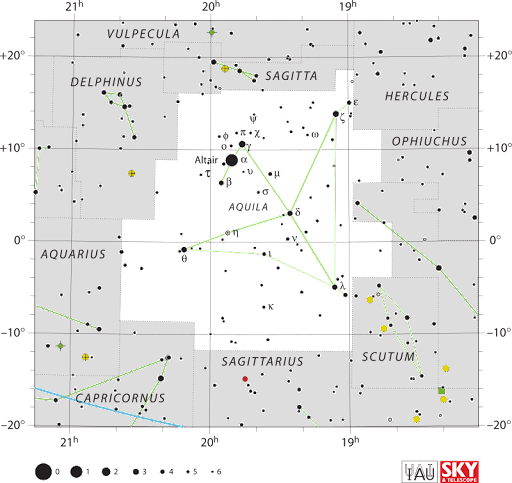
Aquila is the 22nd-biggest constellation of the night sky. It represents a swan, which is easily identifiable with the bright star Altair marking its head. This bird constellation was also called Vultur Volans or the flying vulture before.
The constellation itself is thought to be based on the eagle constellation of Babylon. In Greek mythology, Aquila is said to be the Eagle that carried Zeus’ thunderbolt. It was also the same eagle that Zeus sent to kidnap Ganymede.
Cygnus Constellation

Cynus is another bird constellation that represents the celestial swan. It has a distinct cross-like pattern, known as the asterism of the Northern Cross. The Northern Cross asterism is bigger than the Southern Cross.
Cygnus is the 16th largest constellation out of the 88 modern constellations. It occupies an interesting region in the sky as it lies along the Milky Way. This means that deep-sky objects are abundant in this constellation. Examples are the Rocking Horse Cluster, the open cluster Messier 39, and the Blinking Planetary Nebula.
In Greek mythology, this swan is said to be Zeus who disguised himself to seduce the Spartan queen Leda.
Lyra Constellation
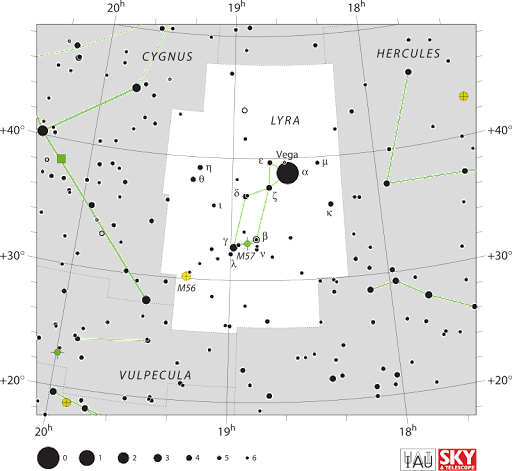
Lyra the Lyre is a small northern constellation. It has a parallelogram pattern and on its base are the stars Sheliak and Sulafat. Between them is the bright planetary nebula called the Ring Nebula. After Vega, Sulafat is the second-brightest star in the constellation.
Lyra is the 52nd largest constellation. More than 70 of its stars have magnitudes brighter than 6.5. Its most prominent member, Vega, was one of the first stars to be photographed. The Dumbbell Nebula and the spiral galaxy NGC 6745 are just two of the deep-sky objects in the constellation.
In Greek mythology, Lyra was the first lyre ever made. It was said to be the lyre of the legendary musician Orpheus. His wife, Eurydice, died from a snake bite but he wanted to bring her back from the Underworld.
After playing the lyre, Orpheus persuaded Hades to let him take his wife back. However, he should never look back at her while they are on their way out of the Underworld. Orpheus looked back to Eurydice so, in the end, he never saved his wife back.
Deep-Sky Objects in Summer Triangle
The Wild Duck Cluster

The Wild Duck Cluster is an open star cluster in the Scutum constellation. It is also called Messier 11 or NGC 6705 in other catalogs. We can find this object through the stars that form the tail of the Aquila constellation.
The stars in the Wild Duck Cluster are rich in iron. The whole cluster is around 4,000 to 11,000 times the Sun’s mass. It is located about 6,000 light-years away.
Messier 56
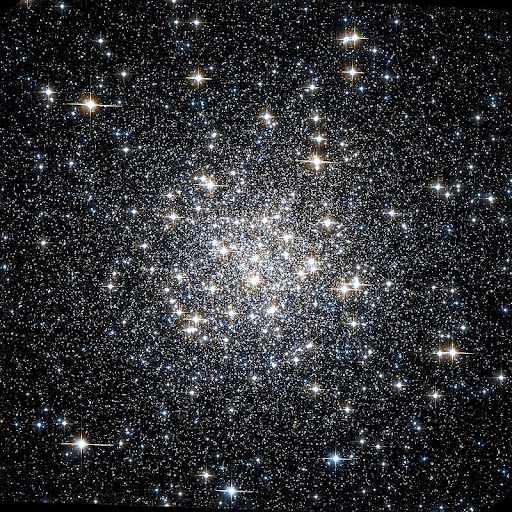
Another star cluster in the vicinity of the Summer Triangle is Messier 56 or NGC 6779. It is a globular cluster flanked by the stars Albireo and Sulafat from Cygnus and Lyra constellations, respectively.
With an apparent magnitude of 8.3, we cannot see this object with the naked eye. It contains variable stars and its brightest member is are around the 13th magnitude. This globular cluster lies about 33,000 light-years away from the solar system.
Messier 71

Messier 71 is another globular cluster near the Summer Triangle. It is in the Sagitta constellation, between the stars Altair and Albireo.
The cluster itself spans nearly 30 light-years across. It has an apparent magnitude of 6.1 and is located about 12,000 light-years from us.
The Ring Nebula

The Ring Nebula or Messier 57 is a planetary nebula in the constellation of Lyra. We cannot see it with the naked eye but a small telescope can easily pick this object.
As a planetary nebula, it was formed when a dying star expelled its outer layers. The core of this star is called a white dwarf, which can be seen at the center of this nebula. The Ring Nebula can be seen south of the bright star Vega. It is located 2,000 light-years from Earth.
The Dumbbell Nebula
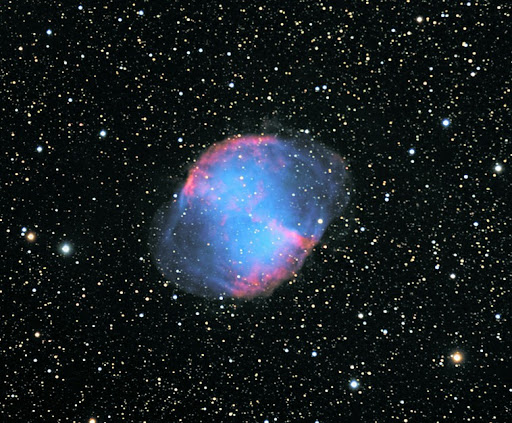
The Dumbbell Nebula (also known as Messier 27 or NGC 6853) is the first planetary nebula that was discovered. Charles Messier discovered it in 1764. Because of its shape, it is also nicknamed the Apple Core Nebula.
The Dumbbell Nebula is made up of knots of dust and gas. The white dwarf at its center has the largest radius of any white dwarf. It is located about 1,360 light-years away in the Vulpecula constellation.
The North America Nebula
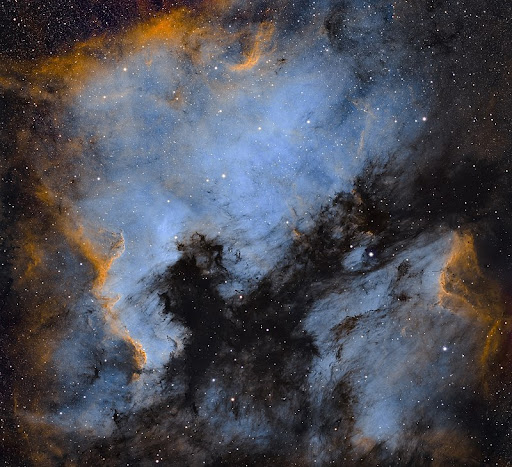
The North America Nebula or NGC 700 is an emission nebula. It was named so because its shape looks like the North American continent.
We cannot easily see it with the naked eye, but it can be visible with the use of binoculars. Also, it is located near the star Deneb, one of the vertices of the Summer Triangle.
The North America Nebula is associated with another region called the Pelican Nebula (IC 5070). These HII regions lie more than 2,000 light-years away.
The Veil Nebula

The Veil Nebula is a supernova remnant formed around 10,000 years ago when a very massive star reached the end of its evolution. This star may have been around 20 times as massive as the Sun.
The Veil Nebula is made up of ionized gases of oxygen, hydrogen, and nitrogen. It is located in the Cygnus constellation, around 2,100 light-years from us.
Historical Significance
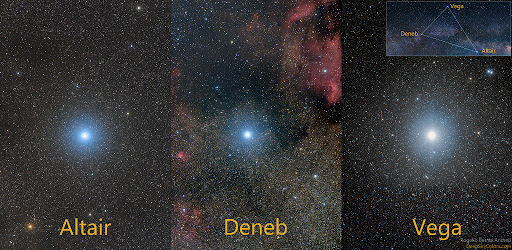
Even before it was called the Summer Triangle, the stars Altair, Deneb, and Vega had been seen together as a group for a long time. As the brightest stars in their constellation, they stand out in the area of the sky which they occupy.
The term “Summer Triangle” became popular around the 1950s. The use of this name in the works of the author H.A. Rey and amateur astronomer Patrick Moore also added to its popularity. Though, the earliest use of this name can be traced back to around 1913.
Different atlases and constellation books referred to it by different names. Oswald Thomas called it the “Great Triangle” and the “Summerly Triangle.” It was described as a “conspicuous triangle” by the Austrian astronomer Joseph Johann von Littrow.
Even before, the Summer Triangle has been one of the most noticeable patterns in our sky. Because of that, it served an important purpose in navigation. The navigation system was not yet as advanced and computerized as it is today, so aircraft navigators used it as a guide. Because of that, it was nicknamed the “Navigator’s Triangle.”
Stories and Folklore Related to Summer Triangle
While stories associated with constellations are usually Greek in origin, the tale of the Summer Triangle is a unique love story that is celebrated in Chinese culture.
The Cowherd and the Weaver Girl

In Chinese mythology, the star Vega is associated with the goddess Zhinü and Altair is the cowherd Niulang. The Milky Way is known as the Heavenly River.
Zhinü was one of the daughters of the Jade Emperor. She was a goddess who weaved her father’s robes from the clouds. She met a cowherd named Niulang when she came down to Earth and bathed in a river.
The two fell in love and married each other. Zhinü enjoyed her life with Niulang and she did not come back to heaven anymore. Her father did not approve of this and he ordered his daughter to be taken back home.
Niulang wanted to go after Zhinü but they never met. The emperor created the Heavenly River to separate the two forever. The lovers were so heartbroken that they became the stars Vega and Altair.
Because of their love for each other, Zhinü and Niulang were allowed to see each other once a year—on the seventh day of the seventh month. On that day, magpies flock together to form a bridge, allowing them to meet.
The story of the cowherd and the weaver girl is celebrated annually in China during the Qixi Festival or the Double Seventh Festival.
Summer Triangle Asterism Sources:
https://www.constellation-guide.com/summer-triangle/
https://en.wikipedia.org/wiki/Summer_Triangle
https://www.nasa.gov/feature/goddard/2017/messier-57-the-ring-nebula
https://www.nasa.gov/image-feature/goddard/2021/hubble-revisits-the-veil-nebula
Summer Triangle Asterism Image Sources:
The Summer Triangle Asterism: created using https://www.stelvision.com/astro/en/sky-map/
How and When to Find the Summer Triangle: https://upload.wikimedia.org/wikipedia/commons/5/5e/Summer_triangle_map.png
Altair (α Aquilae): https://upload.wikimedia.org/wikipedia/commons/6/69/Altair.jpg
Deneb (α Cygni): https://apod.nasa.gov/apod/ap150627.html
Vega (α Lyrae):
https://upload.wikimedia.org/wikipedia/commons/thumb/a/ad/Vega_by_Stephen_Rahn.jpg/800px-Vega_by_Stephen_Rahn.jpg
Aquila Constellation: https://upload.wikimedia.org/wikipedia/commons/thumb/f/fb/Aquila_IAU.svg/800px-Aquila_IAU.svg.png
Cygnus Constellation: https://upload.wikimedia.org/wikipedia/commons/thumb/3/3c/Cygnus_IAU.svg/800px-Cygnus_IAU.svg.png
Lyra Constellation: https://upload.wikimedia.org/wikipedia/commons/thumb/5/5b/Lyra_IAU.svg/800px-Lyra_IAU.svg.png
The Wild Duck Cluster: https://upload.wikimedia.org/wikipedia/commons/thumb/4/4a/Eso1430a.jpg/800px-Eso1430a.jpg
Messier 56: https://upload.wikimedia.org/wikipedia/commons/thumb/7/73/Messier_56_Hubble_WikiSky.jpg/800px-Messier_56_Hubble_WikiSky.jpg
Messier 71: https://upload.wikimedia.org/wikipedia/commons/1/1a/M71.jpg
The Ring Nebula: https://www.nasa.gov/sites/default/files/styles/full_width/public/thumbnails/image/ring-nebula-full_jpg.jpg?itok=yRmKArDB
The Dumbbell Nebula: https://upload.wikimedia.org/wikipedia/commons/7/7a/M27-Mazur.jpg
The North America Nebula: https://upload.wikimedia.org/wikipedia/commons/thumb/5/53/North_America_and_Pelican_-_Wesley_Chang.jpg/800px-North_America_and_Pelican_-_Wesley_Chang.jpg
The Veil Nebula: https://www.nasa.gov/sites/default/files/styles/full_width_feature/public/thumbnails/image/potw2113a.jpg
Historical Significance: https://apod.nasa.gov/apod/image/1506/RBA_ADV_1024.jpg
The Cowherd and the Weaver Girl: https://upload.wikimedia.org/wikipedia/commons/thumb/a/ac/Niulang_and_Zhinv_%28Long_Corridor%29.JPG/1920px-Niulang_and_Zhinv_%28Long_Corridor%29.JPG